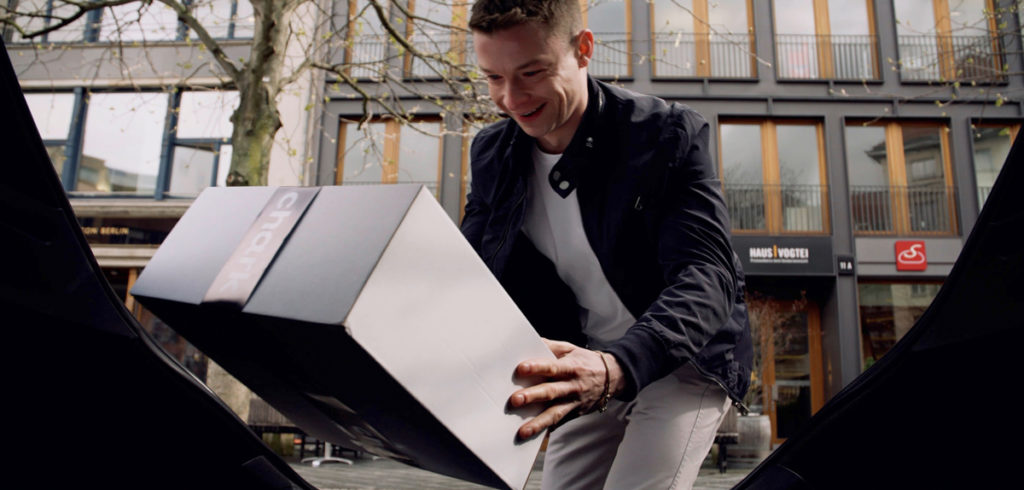Ozhan Zurel, an economist at Saint-Louis University, Brussels, provides insights on in-car delivery based on several interesting pilots conducted in Europe.
What is in-car delivery?
In-car delivery is the last-mile delivery option where delivery service providers gain access to your car’s trunk to deliver a postal item (mostly e-commerce items) through specific software. The postman locates the car, opens the trunk, puts the parcel inside and closes the trunk. The receiver of the postal item then receives a message with a delivery confirmation.
This feature is possible for most cars produced after 2015 since these cars would have the necessary hardware on board to be able to control cars from a distance.
In-car delivery pilot projects
Sweden – 2016
In 2016, Volvo started in Stockholm a pilot project on in-car delivery, named In-car Delivery Service. To this end, the car brand has entered into a partnership with Swedish startup Urb-it. Volvo aims to deliver online orders to the customer’s car within two hours of ordering.
A distinctive feature of Urb-it is the fact that it uses crowdsourcing as a business model. It administers a pool of students and other part-timers who get paid per delivery. Based on availability and geolocation, customers can select a personal ‘urb-it’ to pick up products (from a shop, magazine or restaurant) and deliver them. The name of the deliverer is always communicated to the customer. Urb-it expects to service more than 200 other cities worldwide by 2025.
Germany – 2017
DHL Parcel started a similar project named We Deliver in 2017, together with Volkswagen. When ordering online, consumers who owned a Volkswagen Polo were able to select two-hour timeslots, between 10:00am and 9:00pm, where their car would be in an accessible location. The delivery service would then receive a one-time use code to access the car. Once the courier closes the trunk, the access code is canceled. It is noteworthy that pilot participants were able to both send and receive postal items. Since 2019, it is planned to roll out the service to different Volkswagen models.
Other initiatives in Germany were started by DHL Parcel and Smart, in 2016. Mercedes-Benz also started a free application named Chark, which offers in-car delivery for Mercedes-Benz owners. Chark states on its website that this service is compatible basically with any online shop worldwide.
Spain – 2018
SEAT started a six-month pilot project in 2018 in collaboration with virtual supermarket Deliberry and Courier company Glovo. This pilot was carried out in two car lots managed by Saba in the city of Barcelona.
The app Droppit, which allows customers to have orders delivered in their own cars’ trunk. This service was being tested by SEAT in cooperation with parking garage builder Saba. Customers were able to have their groceries delivered in a Saba parking garage of their choice. Customers who wanted to use the app were asked to leave their car keys with Saba employees after ordering. The order in question would then be delivered in the right car. Droppit plans to link the car to the right customer via fingerprint technology in the future.
Belgium – 2019
Last summer, the Belgian postal incumbent bpost started a pilot project on in-car delivery. Bpost conducted this first test at Cronos, a player in technological innovation based in the municipality of Kontich. The Cronos car lot was used to see how the service could work and whether people would be interested in it. The postal company was even looking for more companies to test this service.
“We want our employees to be able to continue to receive their parcels ‘in the office’, but our reception must, of course, be able to continue to function properly and must not be overwhelmed with parcels,” says Katrien Hennin, communications manager at Cronos. Although users approached the pilot positively, the Belgian market does not seem to have reached sufficient maturity to roll-out the service, according to bpost.
Consumer perception of in-car delivery
According to bpost, 7 out of 10 employees surveyed were positive about in-car delivery. “Half of the people who currently have their parcels delivered to their homes say they would switch to delivery to the workplace, directly in the trunk of the car,” stated Patrick Leysen of bpost.
That in-car delivery, when parcels are visibly places, might lead to vandalism and theft is unfounded in the view of Smart, which states that many customers already allow parcels to be stored on their porch or in their garage via near-house or in-house delivery. Smart also states that customer surveys have shown that a majority rates the advantages higher than possible risks.
Conclusion
In-car delivery is being introduced throughout Europe, based on several delivery methods (crowdsourcing as well as traditional postal courier services).
In-car delivery also seems to be an attractive last-mile delivery option for a niche market of urban e-shoppers. In-car delivery services can be an attractive way for postal and delivery services as well as car manufacturers to distinguish themselves from competitors by providing alternative, tailor-made delivery options.
There are, however, several factors that might influence consumer preferences toward in-car delivery, such as urban logistics regulations (city access restrictions, zero emission zones, etc) and new (integrated) urban mobility transportation models.
 Ozhan Zurel is an economist at Saint-Louis University, Brussels, and writes on e-commerce, delivery platforms, last-mile innovation and consumer preferences.
Ozhan Zurel is an economist at Saint-Louis University, Brussels, and writes on e-commerce, delivery platforms, last-mile innovation and consumer preferences.
Connect with Zurel on LinkedIn.


